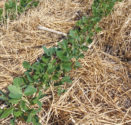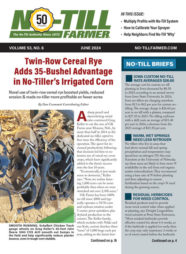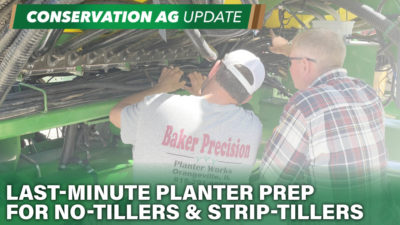Advertise Follow Us
Articles Tagged with ''cereal rye''
Pillars of No-Till Innovator's system include patterned tile, cutting-edge planter attachments, spoon-fed nitrogen, thermal imagery & diverse cover crop mixes
Read More
What I've Learned from No-Tilling
Equipment Changes, Cover Crops Prepare Soggy Soils for No-Tilling
Skip-generation farmer not afraid to try new methods & learn from failures
Read More
No-Tiller's Cover-Cropped Acres 49 Degrees Cooler Than Bare Ground in High Heat
Management strategies, termination times & seed mixtures are all important aspects of a successful plan
Read More
What I've Learned from No-Tilling
‘Every Year I Will Get Better’: No-Tiller Constantly Embraces Change
Ongoing learning & evaluation of technology, cover crops & other practices advance no-till operation
Read More
Cover Crops Promote Higher Yields, Healthier Soils
Grower breaks up compaction & fights pests with several species in Great Lakes region
Read More
Soil Livestock Makes Farming Easier for Longtime No-Tiller
40 years of no-till helps upper Midwest farmer eliminate erosion problems & boost soil organic matter
Read More













